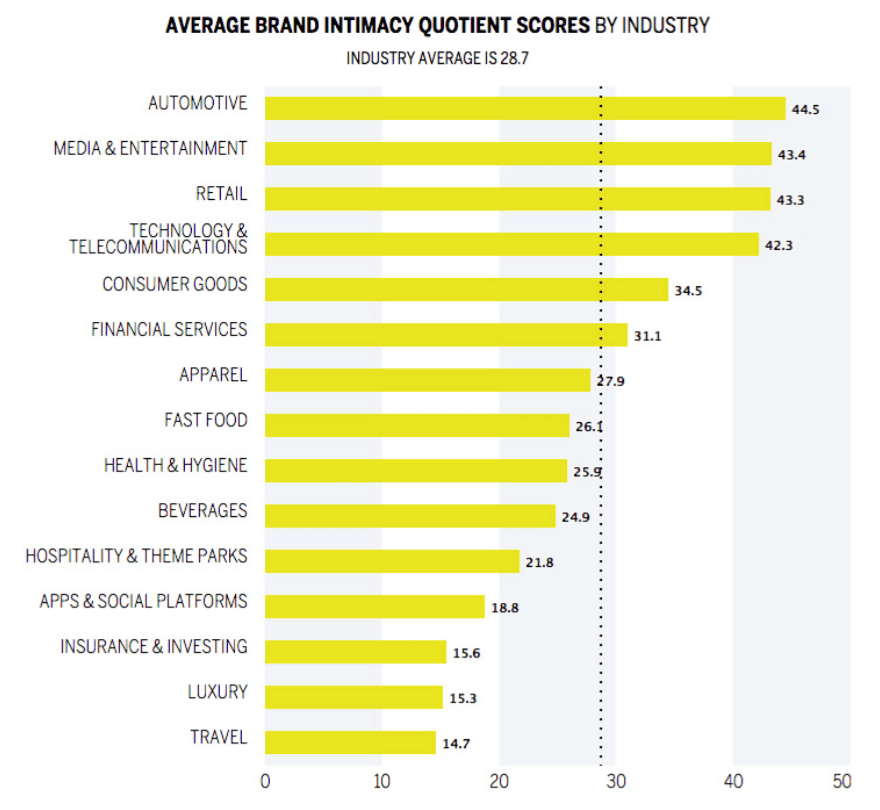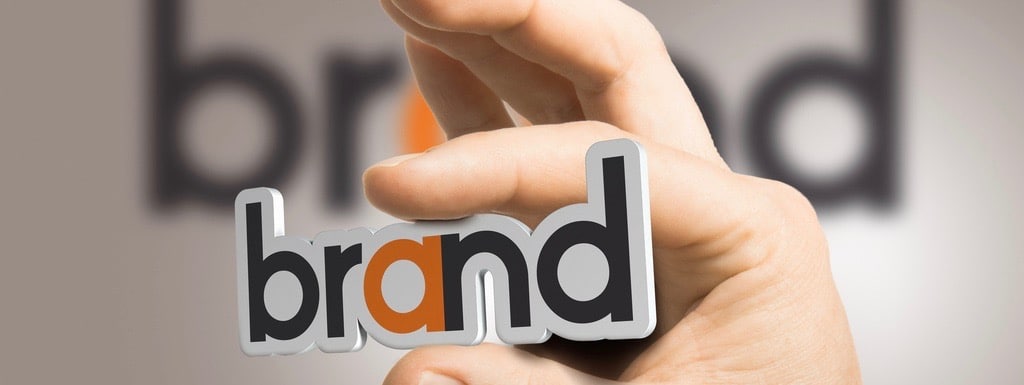The financial services industry is getting more personal, according to its 2017 report from brand intimacy agency MBLM.
The report, the largest study of brands based on emotions, found that PayPal ranked first in the industry, followed by Chase and Visa. Brand Intimacy is defined as a new paradigm that leverages and strengthens the emotional bonds between a person and a brand.
Financial services ranked as the sixth most intimate industry out of 15 analyzed in the study. It outperformed apparel, fast food, health & hygiene, beverages, hospitality & theme parks, apps & social platforms, insurance & investing, luxury and travel. The remaining brands in the top most intimate in financial services are: Wells Fargo, Bank of America, American Express, MasterCard, Capital One and Citibank.
According to the 2017 report, top-ranked intimate brands continued to outperform the S&P and Fortune 500 indices in both revenue and profit over the past 10 years. If top S&P and Fortune 500 brands performed at the same growth rate as the top intimate brands, an average S&P company would have earned an additional $7.7 billion in revenue and $5.3 billion in profit. An average Fortune 500 company would have generated an additional $20.3 billion in revenue and $2.9 billion in profit.
“It is encouraging that financial services brands are improving their intimate performance,” said Mario Natarelli, partner at MBLM, in a news release. “In order to continue building bonds, they must continue to increase engagement and enhance the lives of their customers by delivering convenience, access, new services and seamless experiences. Financial services brands will always play an integral role in our lives, providing them with great potential to engage us through brand intimacy.”
Brands in this industry have utilized mobile and digital banking offerings to expand access to their services, inform and empower their users, and deliver more convenient banking experiences. This may be in part why PayPal dominates in terms of its associations with enhancing consumers’ lives. And with PayPal expanding into point-of-sale transactions and more consumers seeking digital banking experiences from traditional financial services brands, it appears the brand will continue to threaten the more traditional players in the category.
Other notable financial services industry findings from the report in the U.S. include:
- The archetype most associated with this industry is enhancement, meaning becoming better (smarter, more capable and more connected) through the use of the brand
- This year’s top intimate brands in the industry consists of five banks, three credit card providers and one electronic payments brand
- PayPal is the only non-traditional financial services brand in the top nine overall most intimate and the most intimate brand in the category. It has the highest score for the enhancement archetype, the ritual archetype and the fulfillment archetype, which are the three most associated with industry
- The top financial services brands for 18-34-year-olds is Bank of America, for 35-54-year-olds is Chase and for 55-64-year-olds is PayPal
- While it may be surprising that PayPal is number one for the older consumers, it is the only brand that ranks top three across the age groups, #3 for 18-34-year-olds and #2 for 35-54-year-olds
Millennials are increasingly choosing banks for digital services and do not feel tied to their bank. They are more interested in financial offerings from Google and Amazon than from established banks. These sentiments represent a threat for financial services brands, and suggest that they must continue to do more to build greater intimacy with customers as a way to defend against competitive offerings from out-of-category entrants.
See the financial services industry research here.
Download the full Brand Intimacy 2017 Report here.

During 2016, Praxis Research Partners conducted an online quantitative survey among 6,000 consumers in the United States (3,000), Mexico (2,000), and the United Arab Emirates (1,000). Participants were respondents who were screened for age (i.e. 18 to 64 years of age) and annual household income ($35,000 or more) in the U.S. and socioeconomic levels in Mexico and the UAE (A, B, and C socioeconomic levels). This study provides more than a mere ranking of brand performance and was specifically designed to provide prescriptive guidance to marketers. We modeled data from a total of 54,000 brand evaluations to quantify the mechanisms that drive intimacy. Through factor analysis, structural equation modeling, and other sophisticated analytic techniques, the research allows marketers to better understand which levers need to be pulled to build intimacy between brands and consumers.



